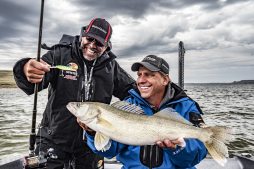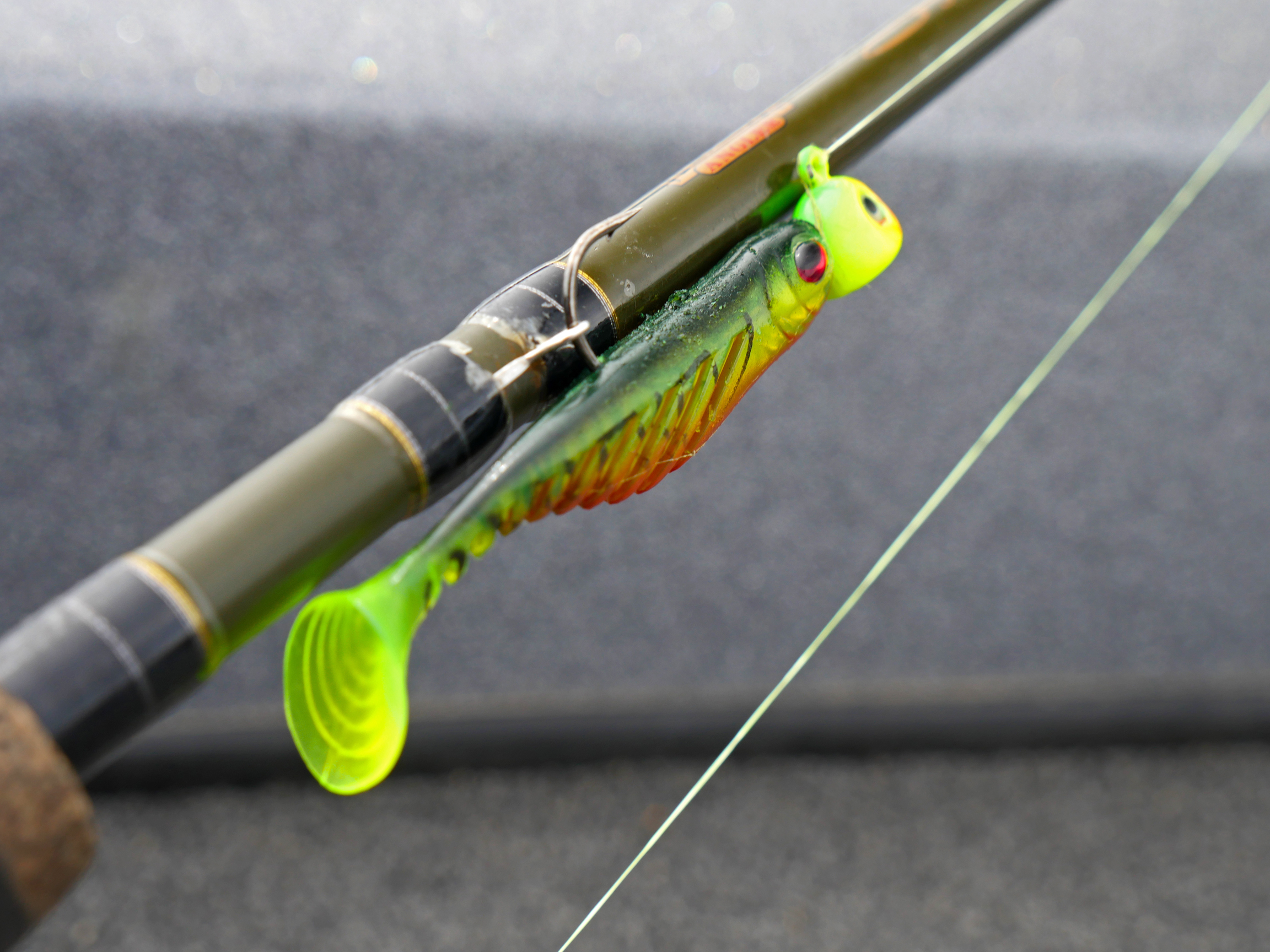
The huge storage lockers on our Nitro ZV21 Pro boats seem to fill up fast with crankbaits. Even more lures travel with us in the back of the truck. For crankbaits, action is always the first question, depth is the second, and color is the last, but where does crankbait size fit into the equation?
Most anglers are taught early on that stickbaits like the Berkley Cutter 90 cast or trolled in cold water work great on walleyes. The rolling action and the classic design triggers fish early or late in the season. Similarly, Flicker Shads and Flicker Minnows have slightly different action patterns that work best in the middle temperatures of the season and the extra kick of the Flicker Shad Jointed often tops other designs in the warmest water temperatures of the year. This is the vibration part of the equation at work.
Alternative lures to the classic action equations include the Berkley Digger and SquareBull models. The Digger has an aggressive nose-down wobble and the SquareBull introduces a hunting action to the retrieve/troll. When chasing walleyes in really thin water, the Flicker Shad Shallow comes into play. These lures are gaining traction as vital parts of a walleye arsenal.
The Cutter comes in the 90 and 110 size. Flicker Shads range from 4 cm to 9 cm in 1 cm increments. The Flicker Minnow now has 4 sizes (5 to 11 cm), the Digger has 6 sizes (3.5 to 14.5), and the SquareBull has 3 sizes (3.5 to 7.5). Each version comes in approximately 20 colors so no wonder they take up an entire aisle at Cabelas!
It does not hurt to understand how bait in the lake changes each year. Water levels and temperatures drive not only the current conditions on the lake, but also the success (or failure) of baitfish spawning and growth details. Shad, shiners, and perch all spawn at different times of the year and high, low, or changing water at the right (or wrong) times greatly affects their density in a lake, stream, or reservoir.
For walleye waters, shiners and shad spawn in May to July depending on latitude. Shad are generally 5 cm long in early fall, 7 cm long by late fall, and much larger (an almost inedible 6 to 9 inches) by the next spring. Shiners grow slower than shad with 1-year-old bait often 4 to 5 cm and 2-year-old bait 6 to 7 cm long. Perch spawn earlier in the year (late spring) and are generally 7 cm long after one year. We could continue with fall-spawning Tullibees, spring-running smelt, and even bluegills, crappie, and baby bass but while these generalizations help, the food chain at a local lake quickly becomes too complicated to know exactly what size of lure will trigger a walleye.
This is where the best anglers simply work through bait details to dial in the right bite for each day. Yes, while one lure will be hot one day, the next day can be completely different forcing anglers to adjust and tweak their pattern to keep the fish going. Sometimes a particular fish is intrigued by an overly large (or small) bait and bite anyways. Overall, we look to the first few bites to start the pattern and use the next 5 to 10 bites help dial in size and color preferences. Sometimes these bites will take hours, and other times it will take a few days of fishing to develop the final understanding of the situation.
Take a simple trolling situation with six lines spread out on a shallow flat using Off Shore Tackle side planers. Starting with action details, the lines might have two Flicker Shads, two Flicker Minnows, and two Berkley Diggers running near the bottom. Sizes for these lures can be based on the biology discussed earlier or simply a guess based on previous experience. The first few bites generate an action-triggered trend suggesting a path forward for the rest of the day.
At this point four or more of the lines will be changed to similar, but not the same lure as the first pattern details. One size up and one size down are an easy plan with small color adjustments OK at this point. As fish bite larger or smaller sizes, keep adding the next size to the spread and subtracting the ignored offering. Always reserve a line or two in order to try something totally different.
Lure size does not always align with fish size. In some cases, larger fish eat larger baits, but in just as many situations larger fish are fooled by smaller lures. When the fish are biting is the best time to experiment and the only way to know for sure is work through the options. The worst thing to do is to keep one set of lures on all day and limit yourself to, “good fishing,” when you could have had, “great fishing.”
While changing lure sizes, depth control stays critical. The Precision Trolling app’s database of lure diving depths helps adjust presentation details for each lure type and size. Matched and calibrated trolling reels like the Cabelas Depthmaster series loaded with identical type and length of line (typically 10-lb Berkley XT or 10-lb Berkley Fireline) also helps increase the fish count. If the smaller lure size will not reach the target depth, Off Shore Tackle snap weights and/or lead core line might be needed to work the pattern. The Precision Trolling app covers these additional situations at a variety of speeds to keep the presentations similar.
The average angler will do well with two or three sizes of each lure type. For example, a set of 5 cm and 7 cm Flicker Shads and Jointed Flicker Shads combined with a few 7 cm and 9 cm Flicker Minnows in three or four colors each is a good place to start. Choose a wide array of colors and contrasts like Mouse, Uncle Rico, Clown, and/or Firetiger to start. If fishing larger bodies of water like the great lakes, add some larger sizes. These 40 or 50 lures can easily fit into a tackle tray or two. As lures are tried put the failed ones in a cup holder or empty tackle tray to make it easy to see what should be tried next. In fact, having a smaller set of lures encourages experimentation because it is simple to see which lures are left. It’s almost a guarantee that a pattern will emerge before the box is empty.
Do not let the overwhelming choice of crankbaits make walleye fishing too complicated. While more lures is always better, do not forget that the real issue is changing lures while trolling or casting until a clear preference emerges. Even after a few fish on one lure, keep rotating through the options until you 100% know you have found the Next Bite.










